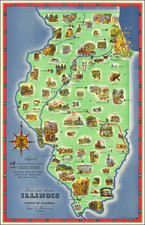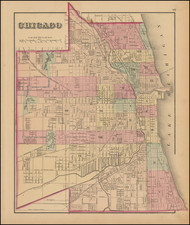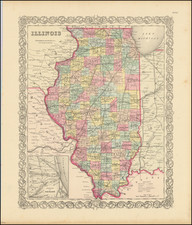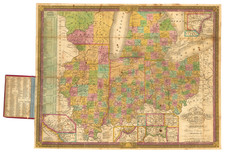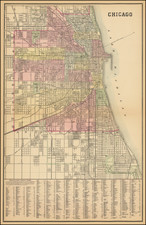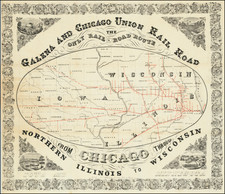This 1932 map of Joliet, Illinois, created by Roy Stacy, is a comprehensive representation of the city during a crucial period in its history. The map is extensively detailed, marking the intricate network of streets, railroads, and waterways that crisscross the city.
Prominent in the map's layout are the paths of the Chicago & Joliet Elec. Ry. St. Car lines and the Chicago & Joliet Tran. Co. Motor Coach Lines, indicative of the city's transit system at the time.
The map also includes an inset of downtown Joliet, providing a close-up view of the heart of the city with its hive of activities. The map dentifies important civic and commercial features, such as schools, businesses, parks, cemeteries, and landmarks, effectively serving as a functional guide to the city's layout.
At the right of the map is a comprehensive street index, a practical tool for navigation, with an industrial index at the left. The latter catalogues dozens of businesses, manufacturers, hotels, and other sites of interest, offering a fascinating snapshot of the city's economic life in the 1930s.
Joliet, Illinois
At the dawn of the 20th century, Joliet, Illinois, was a burgeoning city, spurred by the development of heavy industry and the arrival of railroads. Its strategic location on the Des Plaines River made it an important hub for transportation and commerce. The early 1900s witnessed Joliet's continued industrialization. The manufacturing sector, particularly the steel industry, was at the forefront, providing employment opportunities and attracting waves of immigrants and domestic migrants seeking better livelihoods. This influx of people transformed Joliet from a small town into a bustling city.
Joliet's extensive rail network, depicted in the 1932 map, played an integral role in its growth. The city's railroads, including the notable Elgin, Joliet & Eastern Railway (EJ&E), provided essential transportation for goods and people, fostering the city's integration with the broader economy.
The Great Depression of the 1930s, however, did not leave Joliet untouched. The city's heavy reliance on the steel and manufacturing industries led to widespread unemployment and economic hardship. But despite these challenges, Joliet showed remarkable resilience, bouncing back and continuing its industrial growth into the 1940s.











